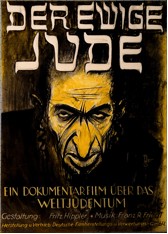By Steven Philp
 It has been five quiet years since Lamb and Lynx Gaede stepped out of the national spotlight—ending a short and controversial career as the neo-Nazi pop duo Prussian Blue—yet this month they came out of their self-imposed solitude to give an interview with The Daily, singing a different tune. “I’m not a white nationalist anymore,” Lamb explained. “My sister and I are pretty liberal now.” Lynx confirmed their change of heart. “Personally, I love diversity,” she added.
It has been five quiet years since Lamb and Lynx Gaede stepped out of the national spotlight—ending a short and controversial career as the neo-Nazi pop duo Prussian Blue—yet this month they came out of their self-imposed solitude to give an interview with The Daily, singing a different tune. “I’m not a white nationalist anymore,” Lamb explained. “My sister and I are pretty liberal now.” Lynx confirmed their change of heart. “Personally, I love diversity,” she added.
Delivered with such earnestness, it is difficult to believe that these opinions come from the same young women who had spent several years singing at small venues in North America and Europe, spreading messages of white supremacy and Nazi ideology. Prussian Blue was formed under the guidance of their mother April Gaede after the twins were well received at white nationalist events between 2001 and 2003. In 2004 the duo recorded and released their first album Fragment of the Future under Resistance Records, a label closely tied to the National Alliance; this white supremacist organization was founded in 1974 by William Pierce, an outspoken Nazi-sympathizer and—among other forms of bigotry—anti-Semite. Although not widely distributed, Fragment of the Future brought national media attention to the twins for its white nationalist content—including the song “Hate for Hate: Lamb Near the Lane,” penned by Lamb and David Eden Lane. Lane—who passed away in 2007—was a member of The Order, a terrorist organization that precipitated the murder of Jewish talk show host Alan Berg in June 1984.
When interviewed by ABC Primetime in October 2005, the twins eagerly parroted the ideology of their mentors. “We’re proud of being white, we want to keep being white,” explained the thirteen-year-old Lynx. “We want our people to stay white…we don’t want to just be, you know, a big muddle. We just want to preserve our race.” In the same interview their mother April admitted to adding white nationalist themes to the twins’ home education curriculum. “They need to have the background to understand why certain things are happening,” she explained. It was the need to make white nationalism more appealing to a younger audience that drove Eric Gliebe, operator of Resistance Records, to sponsor the twins. Their saccharine melodies provided a pop alternative to the harder genres of his other acts, and allowed his label to access a new market. “Eleven and 12 years old,” he explained of his decision. “I think that’s the perfect age to start grooming kids and instill in them a strong racial identity.” And it was this combination of innocence and hate that made the twins a gross fascination for such a large number of people. Even the name of the band embodies this uncomfortable juxtaposition. According to a 2004 interview with Vice Magazine, Prussian Blue refers both to their German heritage, the color of their eyes—a “really pretty color”—and Zyklon B, the preferred toxin used in WWII concentration camps. Blue discoloration is caused by Zyklon B residue; according to the twins, the lack of substantial “Prussian blue” patches in the remains of Nazi gas chambers “might make people question some of the inaccuracies of the ‘Holocaust’ myth.”
Now 19 years old, the twins claim they have moved away from their white nationalist roots. Lynx attributes their prior ideology to a sheltered childhood, specifically their home-based education. “We were these country bumpkins,” she explained. “We spent most of our days up on the hill playing with our goats.” Lamb concurred with her sister, explaining that in their songs and interviews they emulated the adults around them rather than expressed their own opinions. “I was just spouting a lot of knowledge that I had no idea what I was saying,” she said. The initial change occurred during their 2006 European tour with the Swedish white supremacist act Saga, when the twins decided to add the song “Knockin’ on Heaven’s Door” to their set; the audience reacted negatively, given that Bob Dylan—born Robert Zimmerman—is Jewish. Still Lynx and Lamb persisted, singing the song at all subsequent concerts. When they returned to the States, they decided that the gig was up. The girls have passed the last five years attempting to lay low and avoid further controversy; recurrent health issues—Lynx underwent treatment for cancer and Lamb suffers from chronic back pain and scoliosis—also prompted them to seek a semblance of normalcy in their lives. Once lauded as the new face of white nationalism, their change in heart has garnered a fair share of criticism within the movement. According to Lynx, they have been labeled as “race traitors.”
Yet despite the evolution of opinion that the twins have demonstrated, it is still possible to identify elements of their white nationalist education within their worldview. The Daily points to their continued denial of the Holocaust; when asked if genocide has occurred, Lynx responded, “I think certain things happened. I think a lot of the stories got misconstrued. I mean—yeah—Hitler wasn’t the best, but Stalin wasn’t, Churchill wasn’t. I disagree with everybody at that time.” Lamb agreed with her sister, expressing frustration with what she perceives as a societal obsession with the events of WWII. “I just think everyone needs to frickin’ get over it,” she argued. “That’s what I think.”




 This past week at the Cannes International Film Festival, Danish film director and provocateur
This past week at the Cannes International Film Festival, Danish film director and provocateur 